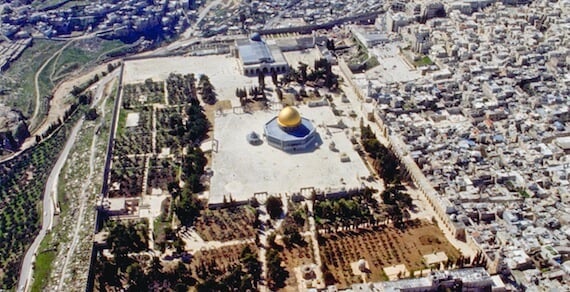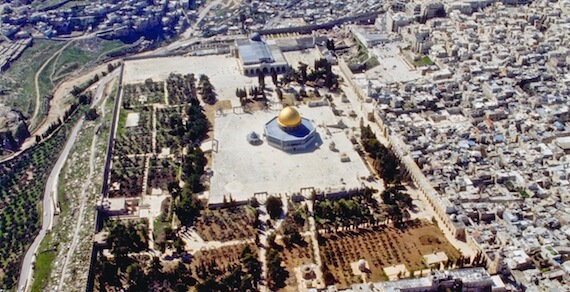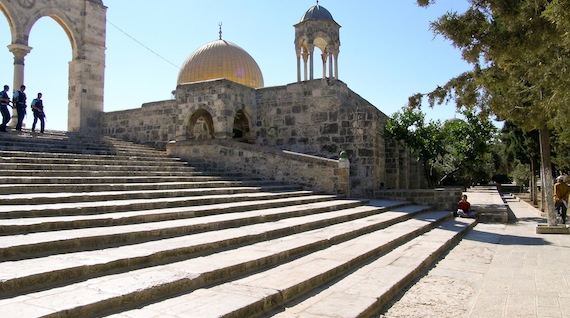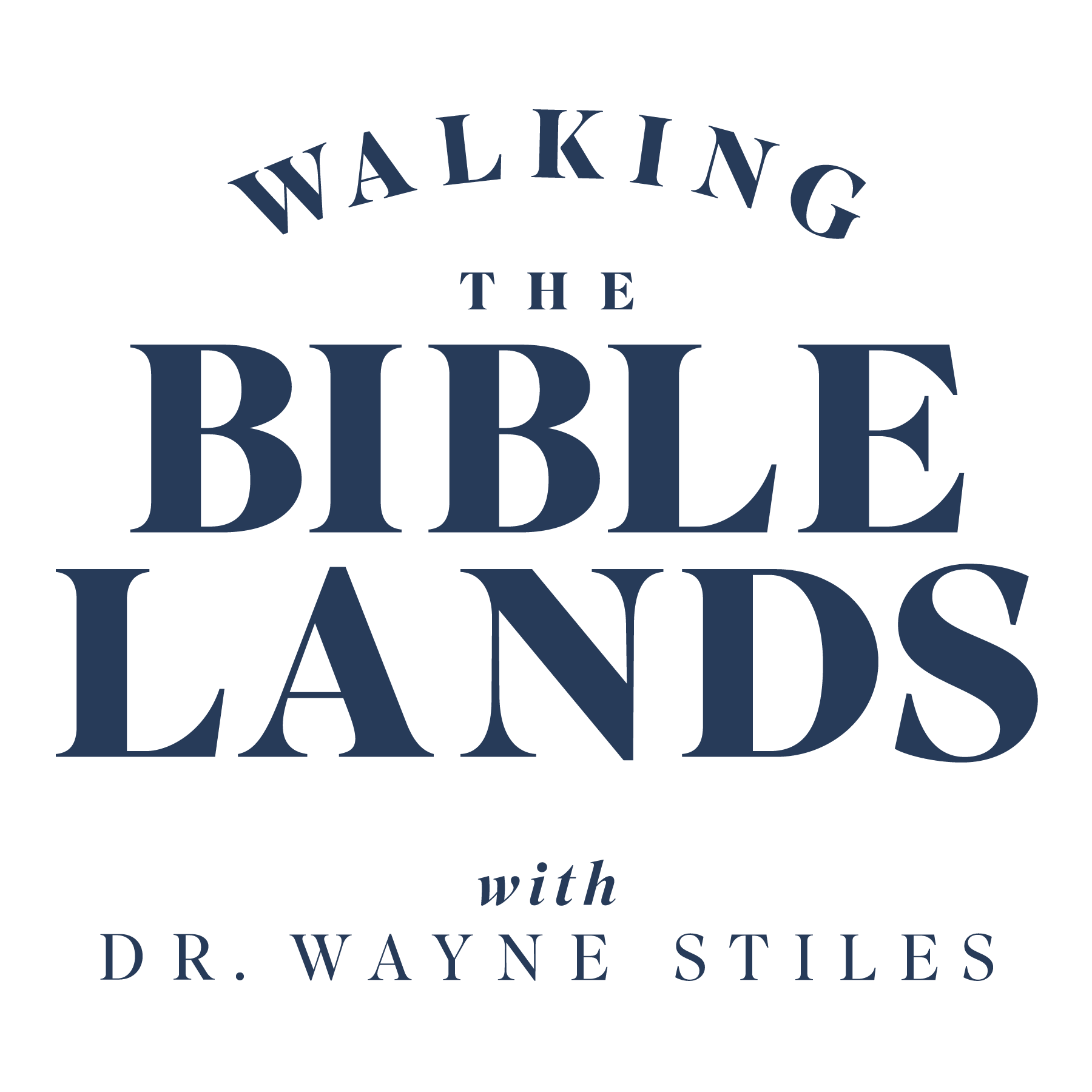4 min read
The Temple Mount in Jerusalem—An Ordinary Hill Made Holy
There's only one thing we can give our God who has everything.
Admin
:
Feb 26, 2017 9:00:38 PM

Abraham saw the acreage. David bought the lot. Solomon built the house. Nebuchadnezzar tore it town. Zerubbabel rebuilt it. Herod the Great expanded it. Titus flattened it.
Before these temples stood on Mount Moriah, it was nothing but a hill used for threshing wheat. Hardly worth noticing.

(Photo: the Temple Mount in Jerusalem, courtesy of Pictorial Library of Bible Lands)
But today, the Temple Mount remains the most precious piece of real estate in the world. And the golden shrine that graces its crest has become the icon for the Holy City of Jerusalem itself.
How did this ordinary hill become holy? Not through battles or land bartering or by popular vote.
God chose it. It’s the same with us.
Abraham Saw the Acreage
The site of the Temple Mount first appeared on the scene when God told Abraham to go to the land of Moriah and sacrifice Isaac there (Genesis 22:2).
The “Binding of Isaac” climaxed with the Lord providing a ram for Abraham to sacrifice in the place of his only son. Thus the saying began: “In the mount of the LORD it will be provided” (Genesis 22:14).
David Bought the Lot and Solomon Built the House
One millennium after Abraham, King David purchased the threshing floor of Araunah the Jebusite as a site to offer sacrifices after his David’s sin with the census (2 Samuel 24:18-25).
In the same area where Abraham came to offer Isaac, and on the very hill where David offered burnt offerings for his sin, Solomon began to build the First Temple on Mount Moriah in 966 BC (1 Kings 6:1; 2 Chronicles 3:1).
Then Solomon began to build the house of the LORD in Jerusalem on Mount Moriah, where the LORD had appeared to his father David, at the place that David had prepared on the threshing floor of Ornan the Jebusite. —2 Chronicles 3:1
The original size of the Temple Mount was smaller than the outline we see today, which is Herodian. Leen Ritmeyer has convincingly argued in his excellent volume, The Quest, that the Mishna’s measurements of a 500-cubit square Temple Mount fit with the archaeological evidence.
- At the bottom of a staircase to the northwest of the Dome of the Rock lies a large step precisely 500 cubits (750 feet) from the eastern wall. Ritmeyer points to this step as the top of the pre-Herodian western wall. The step since has been covered over with new pavement.
- Along the outside of the eastern wall of the Temple Mount, a seam in the wall clearly joins two sections of wall built at different eras. If the older part of this seam forms the pre-Herodian corner of the 500-cubit square Temple Mount, then the Dome of the Rock covers the spot where the Temple stood—including, of course, the Holy of Holies.

(Photo: The bottom step may be the top of the pre-Herodian west wall. Courtesy of Pictorial Library of Bible Lands)
Nebuchadnezzar Tore it Down and Zerubbabel Rebuilt It
The Babylonians under King Nebuchadnezzar tore down the First Temple on Tisha B’Av (the 9th of Av) in 586 BC. It had stood for 380 years.
The exiled Jews returned to their land after 70 years when Cyrus the Great allowed them to rebuild the Temple. The structure Zerubbabel erected seemed modest in comparison to Solomon’s magnificent edifice. Following the first Maccabean triumphs, the Jews improved it even more.
Herod the Great Expanded it and Titus Flattened it Again
The most elaborate reconstruction and renovation occurred when Herod the Great began his extensive building project that would crown the Second Temple.
- Herod expanded the Temple Mount north, west, and south to its present dimensions of thirty-five acres.
- After Herod the Great expanded the hill, its topography lay hidden beneath acres of backfill and retaining walls.
- The construction of Herod’s marvelous temple began in 20 BC and continued for 83 years (imagine that!).
This was the Temple Jesus knew, whose destruction He predicted (Matthew 24:1-2). The Southern Steps of the Temple Mount where pilgrims walk today would have felt Jesus’ sandals too.
In AD 70 Titus rolled in his Roman legions and destroyed on Tisha B’Av in a matter of days what had taken decades to construct (see Daniel 9:26). Stones from the Second Temple still lay in the first-century street where archaeologists found them.
The Temple Mount – The Rest is History
The Muslim ruler Abd el-Malik built the shrine called the Dome of the Rock on the Temple Mount between AD 688-691. Its golden veneer is a 20th-century addition.
What’s more, Muslims forbid any archaeology on the Temple Mount today.
- As a result, archeologists and historians do their best to piece together history from the plentiful remains surrounding the Temple Mount.
- After years of sifting through tons of bulldozed rubble from the Temple Mount—that was dumped in the Kidron Valley—the Temple Mount Sifting Project has discovered finds from the Second Temple period: arrowheads, paving tiles, ancient seals, coins, combs, jewelry, game pieces, weights—and more.
The Holy Land and the Holy City owe their designations to a hill where the Holy of Holies resided for centuries. The Temple Mount remains the most photographed spot in Jerusalem and the goal of many pilgrimages—even to today.
It’s amazing that the most important religious site in the world was for centuries a mere elevated hill north of Jebus where farmers threshed wheat.
The ordinary was made holy because God chose it. Just like all who follow Him.
Devotional Thought for the Temple Mount
Read 2 Chronicles 2:5-6; John 4:19-26.
Solomon understood that the Temple he would construct could not house the Lord. How do you confine omnipresence? Even the great Solomon understood that the best he could offer God was worship.
When Jesus told the Samaritan woman that worship would no longer be confined to the Jerusalem Temple, He taught her “the true worshipers will worship the Father in spirit and truth; for such people the Father seeks to be His worshipers” (John 4:23–24).
Because of God’s holiness and grace through offering His only Son, what can we really offer Him in return but absolute worship? That is what He seeks.
Through Him then, let us continually offer up a sacrifice of praise to God, that is, the fruit of lips that give thanks to His name. —Hebrews 13:15
Tell me what you think: What do you think about the notion that all you can give God is worship? To leave a comment, just click here.
The Temple Mount on the Map:
See The Holy Land In Person
Journey to the Bible Lands with Wayne Stiles. You will NEVER be the same! Learn more:
Click here to leave a comment.
-1.png?width=5230&height=1198&name=unnamed%20(4)-1.png)


.jpg?width=350&name=Wayne-books-350wide%20(1).jpg)




